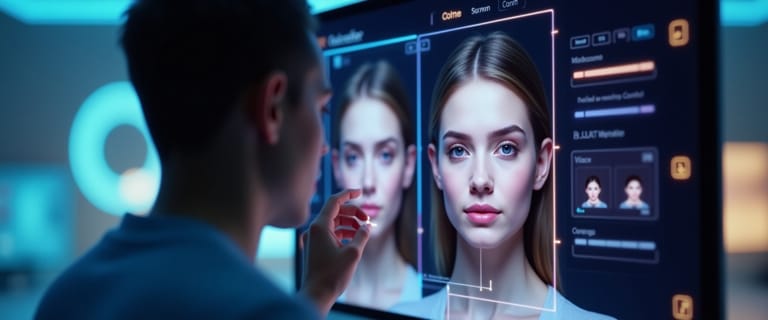For decades, digital photo editing has been a world of complex menus, cryptic tools, and numerical inputs. To make a change, you often had to type in a value, wait for a render, and then undo it if it wasn't right. The process was powerful, but far from intuitive.
What if editing a face felt less like operating software and more like sculpting clay? This is the philosophy behind a new generation of AI-powered editors that use direct manipulation interfaces—namely, sliders and joysticks—to give you a more tactile, intuitive, and immediate connection to your work.
This guide will walk you through how to master these controls in Expression Editor AI to adjust any facial expression with ease and precision.
The Power of Direct Control
Why are sliders and joysticks a game-changer for editing faces?
- Intuitive Feel: You don't need to know the difference between " Puppet Warp" and "Liquify." You just push a slider to the right to add more "Smile," or move a joystick up to make someone look "up." The control directly maps to the desired outcome.
- Real-Time Feedback: Paired with a live 3D preview, these controls allow you to see the effect of your changes as you're making them. This creates a fluid, uninterrupted creative process.
- Discoverability: Sliding a control from one extreme to the other is a great way to discover its full potential. It encourages experimentation in a way that typing in numbers does not.
Mastering the Sliders: Your Sculpting Toolkit
The sliders are your primary tools for precision adjustments. They are grouped by the area of the face they control.
Eye Control Sliders
- Blink/Wink: This is your "eye-opening" control. Slide it left to open closed eyes or right to create a squint or wink.
- Eyebrow: This slider controls the vertical position of the eyebrows. A small adjustment can transform a neutral expression into one of surprise or focus.
- Pupil X/Y: For ultimate precision, these sliders give you numerical control over the horizontal (X) and vertical (Y) position of the pupils.
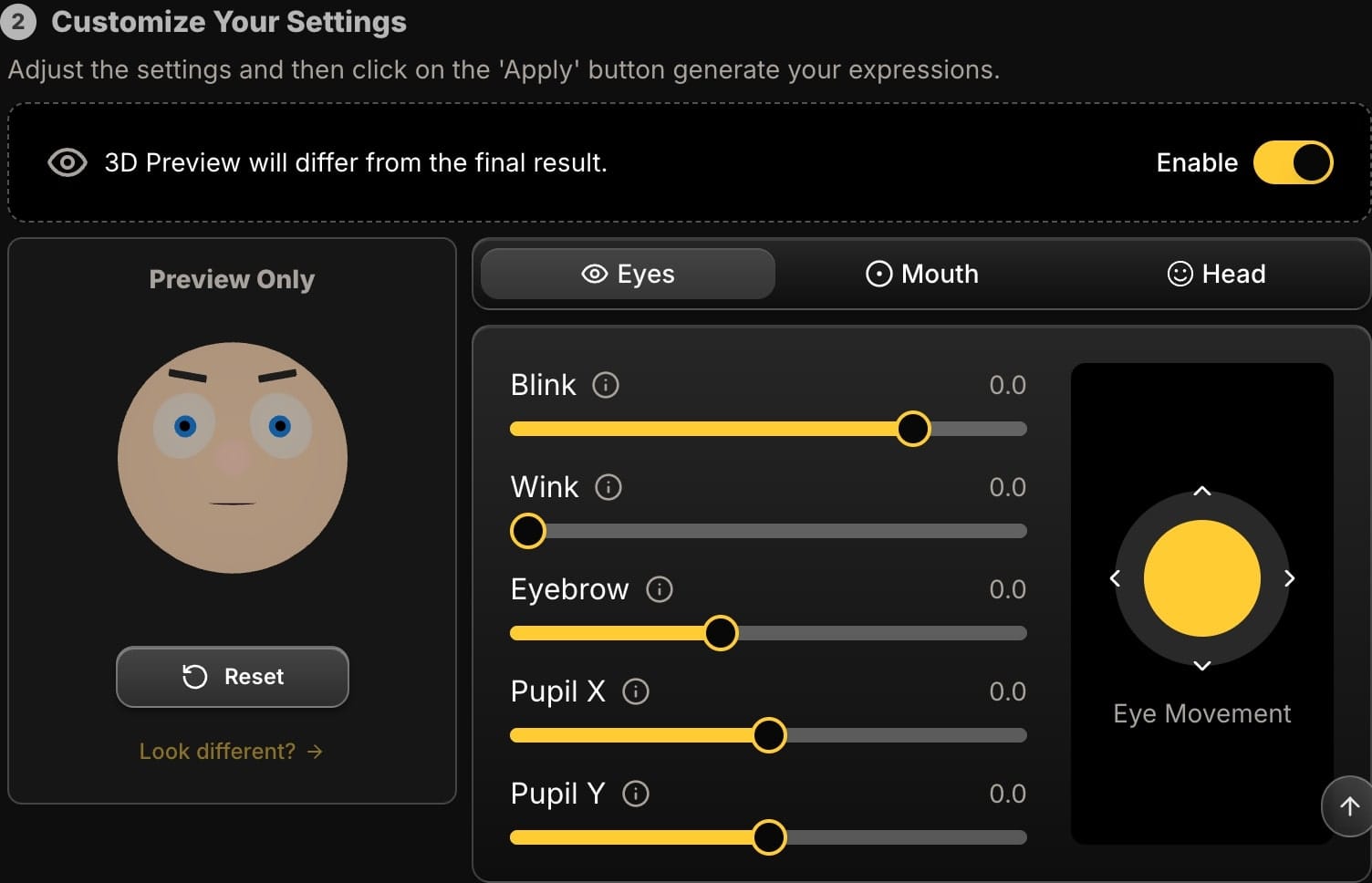
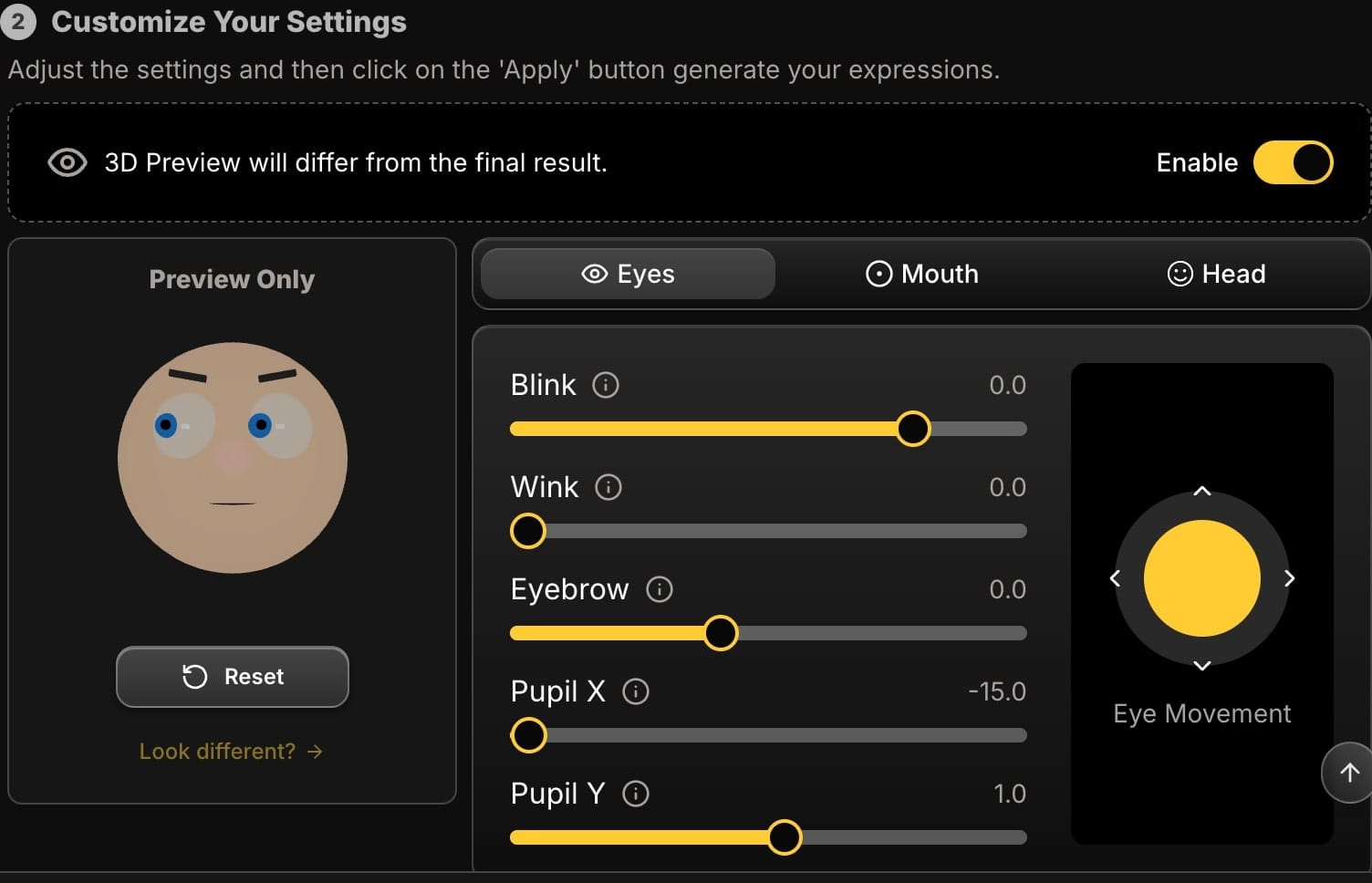
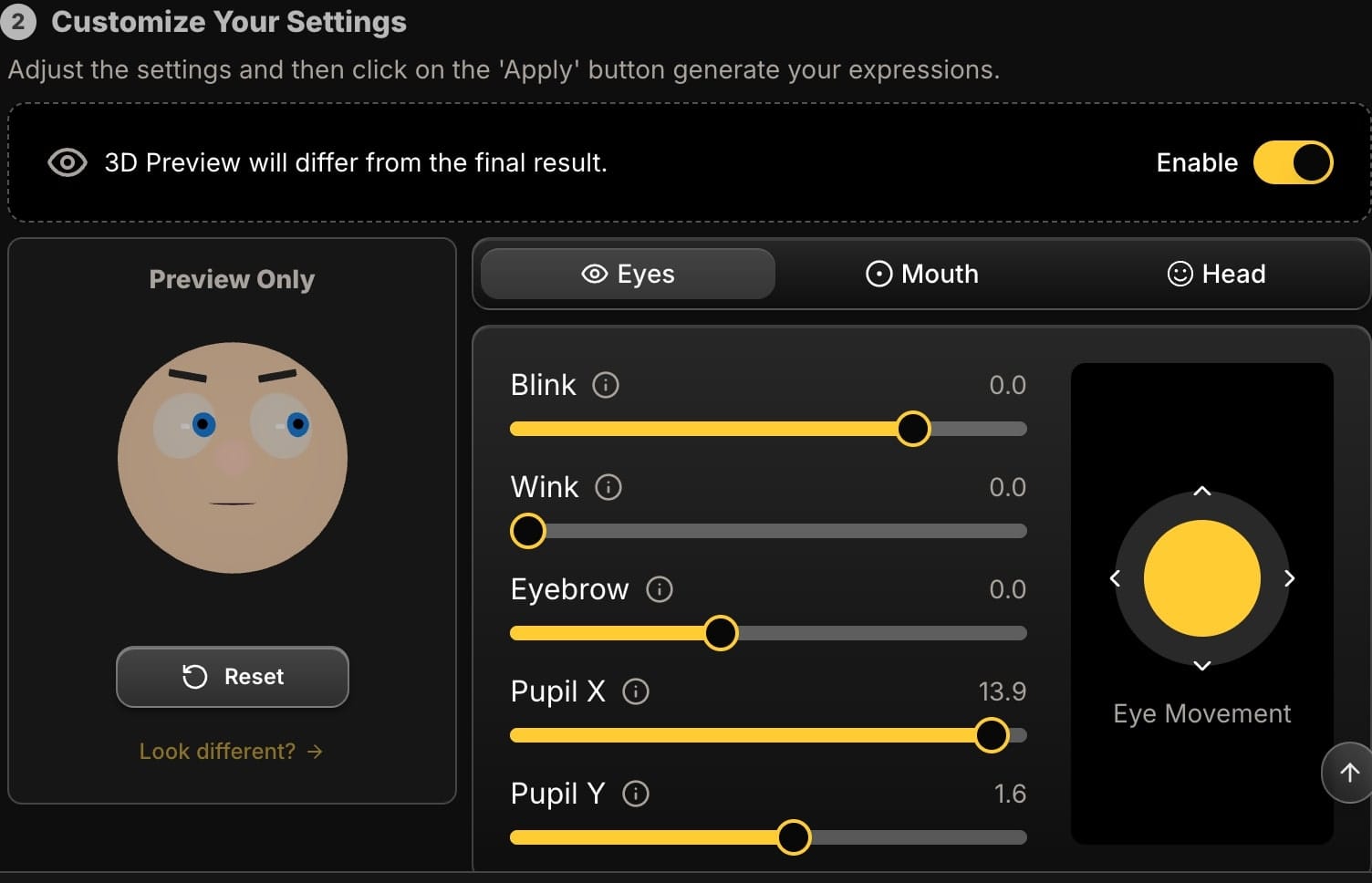
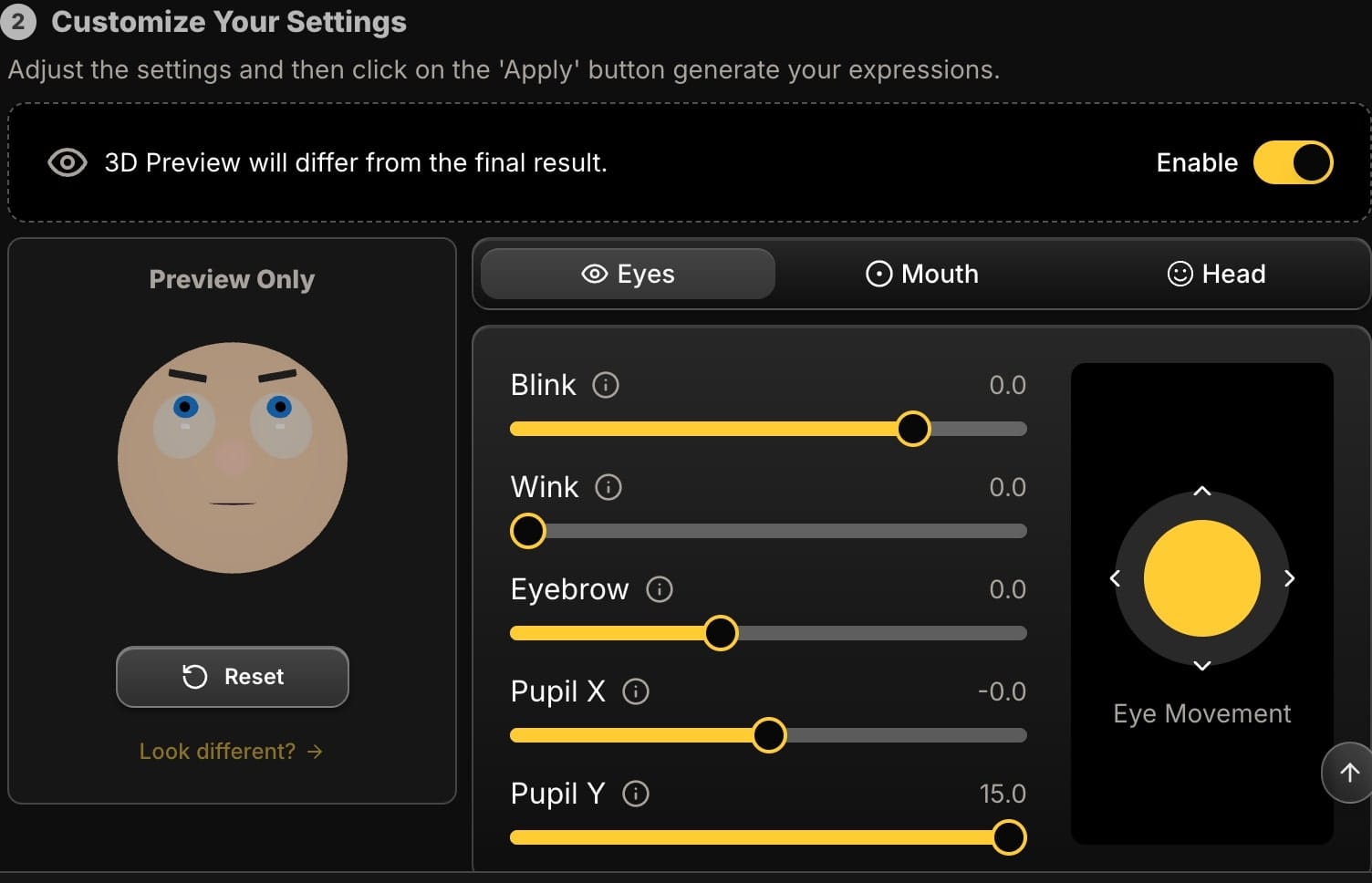
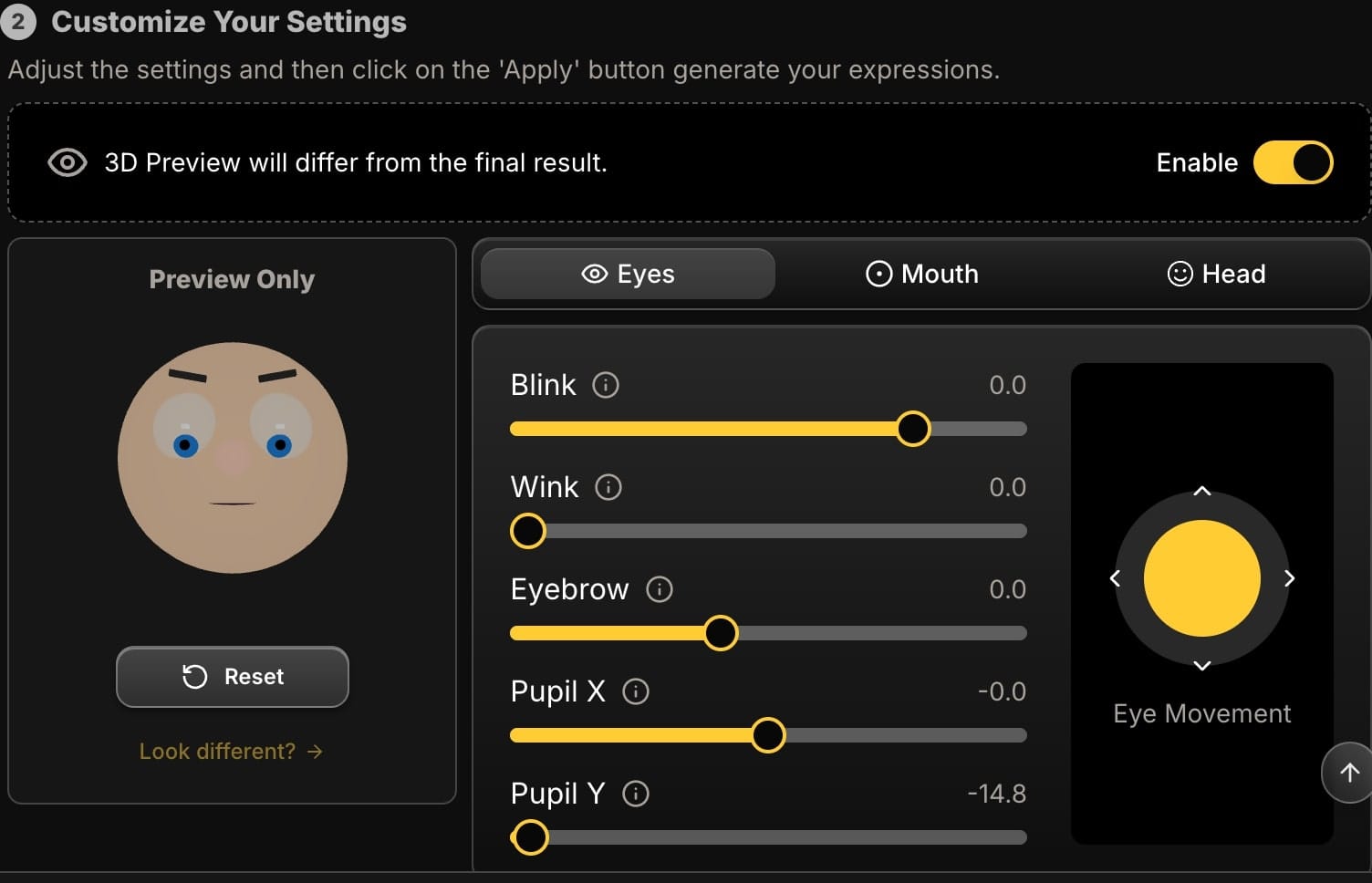
Mouth Control Sliders
This is where you can blend controls to create any expression.
- Smile: The foundational slider for happiness. But a smile is more than a curve.
- 'AAA', 'EEE', 'WOO': These sliders control the mouth shape, based on the shapes we make when creating sounds.
- Combine Smile with a little 'EEE' to create a wider, more genuine-looking grin.
- Combine Smile with a little 'AAA' to part the lips for a more relaxed look.
- Use 'WOO' to create a rounded or pursed-lip expression.
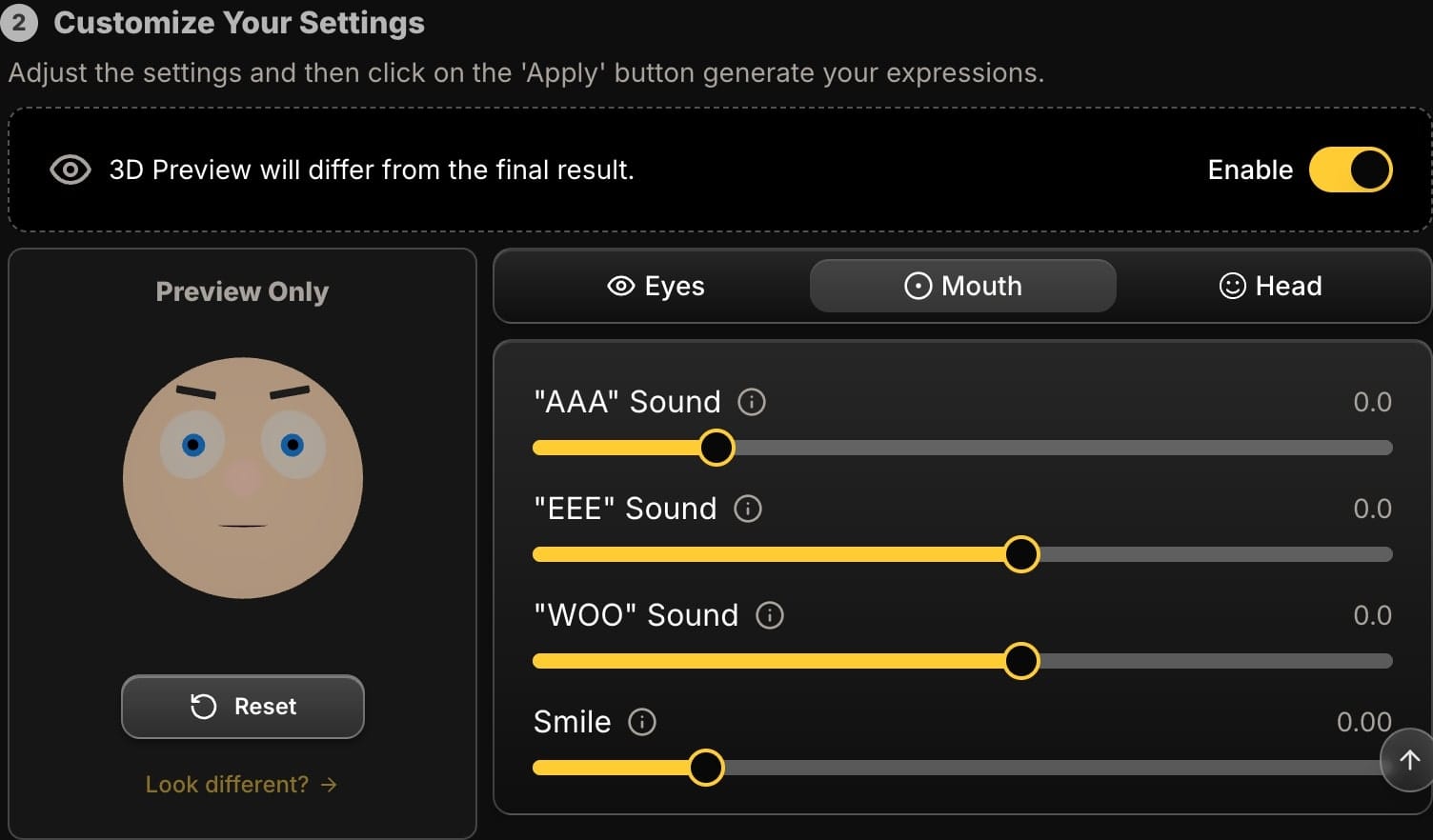
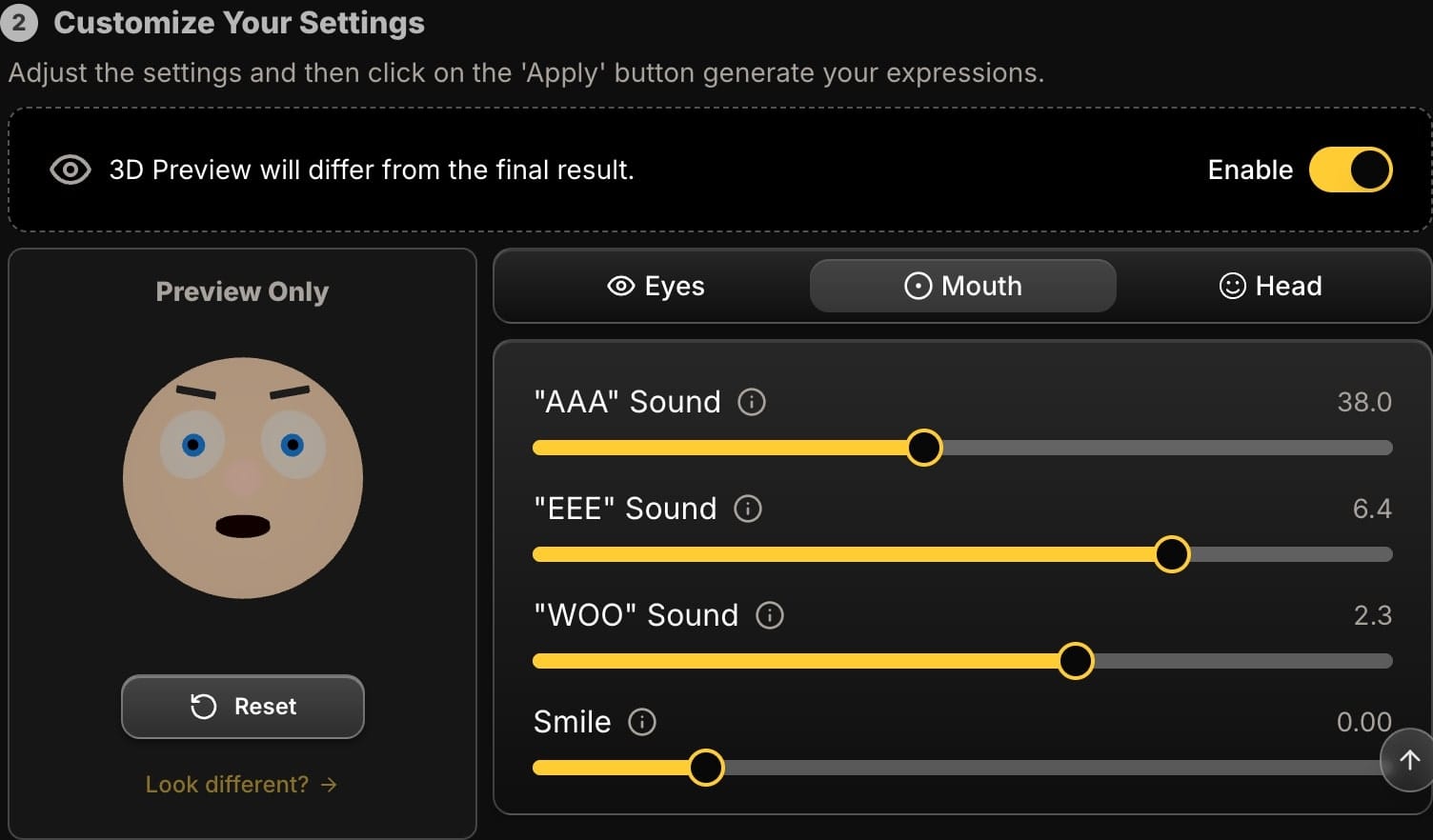
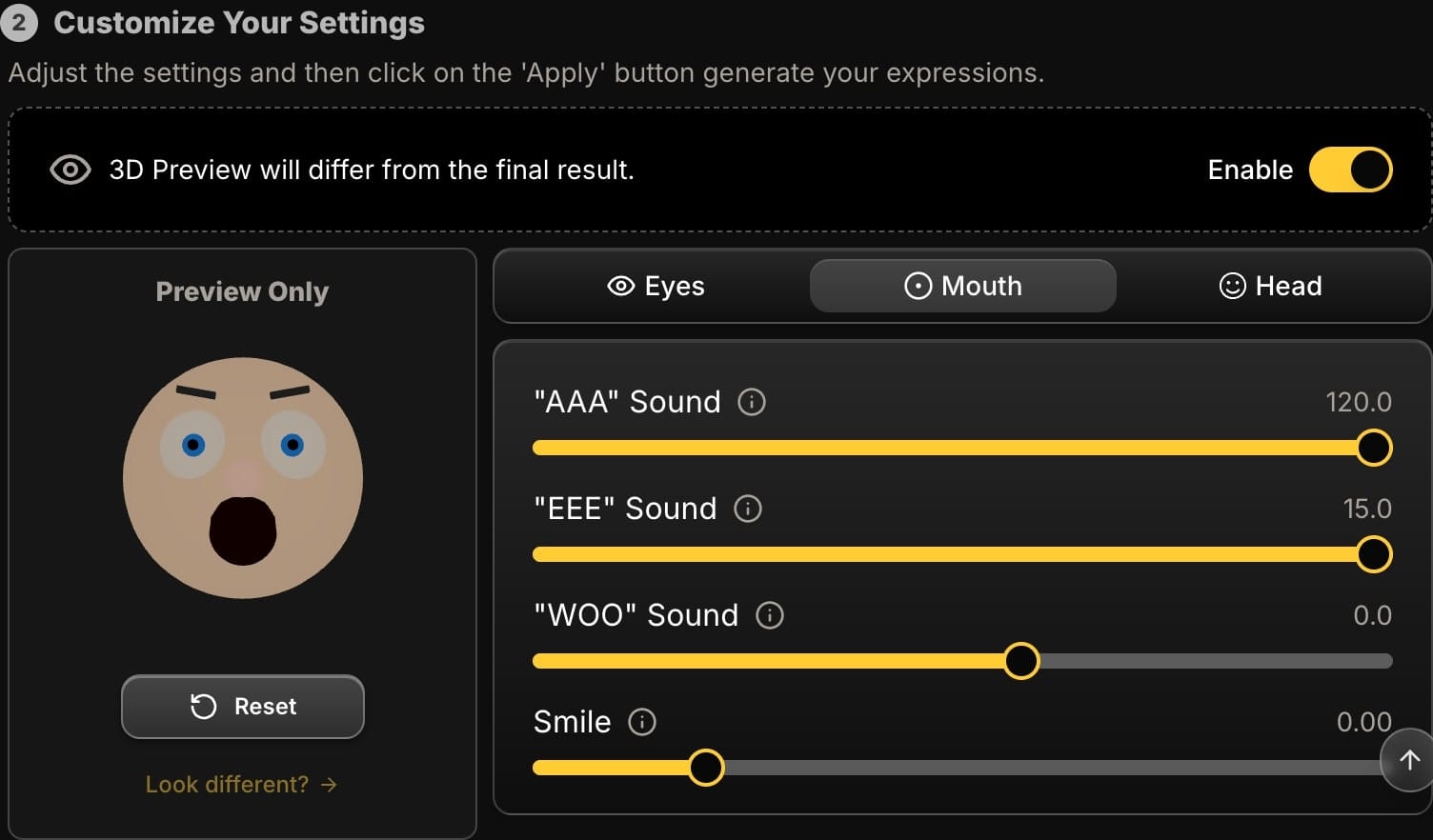
Head Control Sliders
These sliders control the 3D orientation of the head.
- Pitch: Controls the up-and-down "nod."
- Yaw: Controls the left-and-right "turn."
- Roll: Controls the side-to-side "tilt."
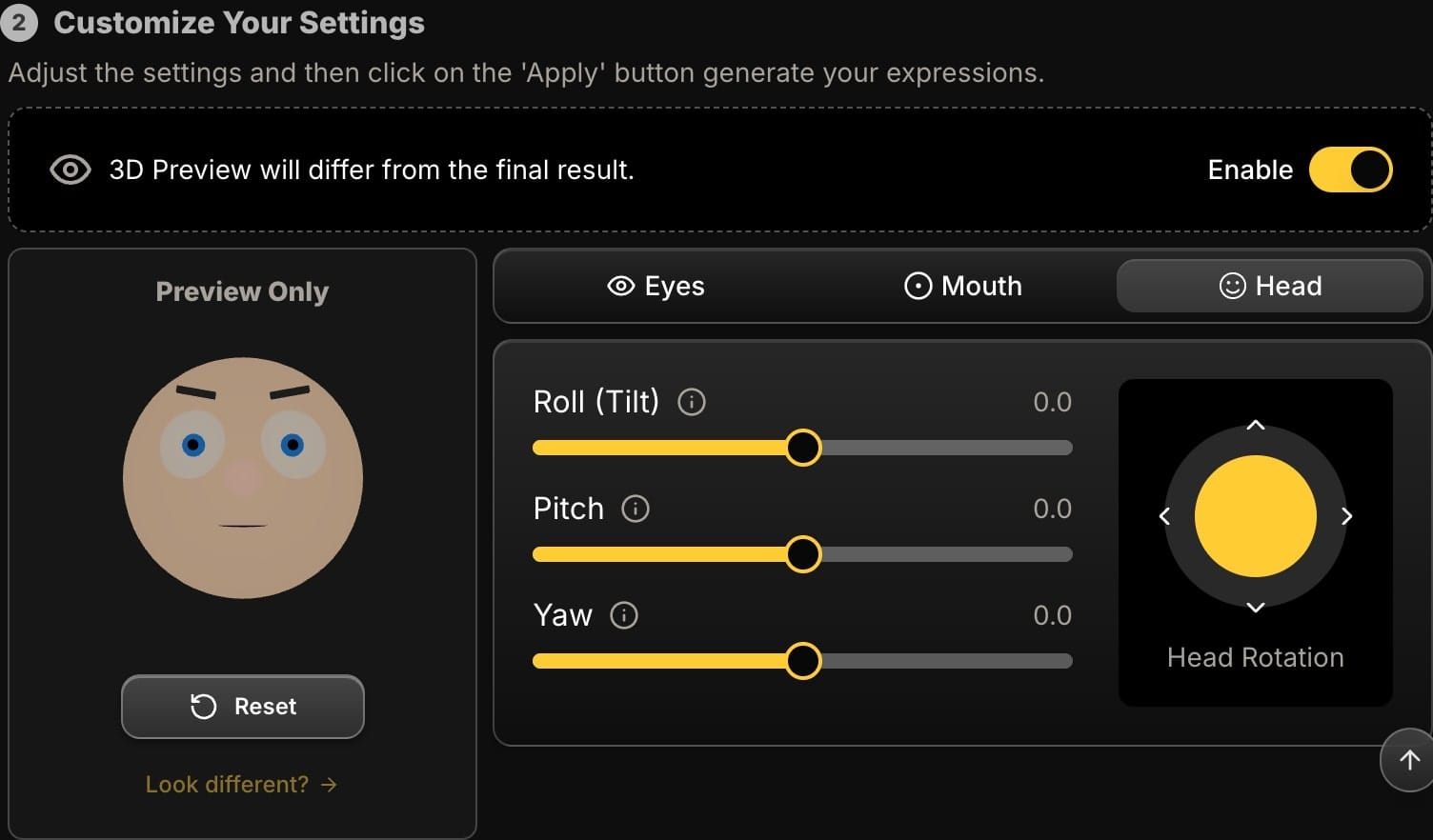
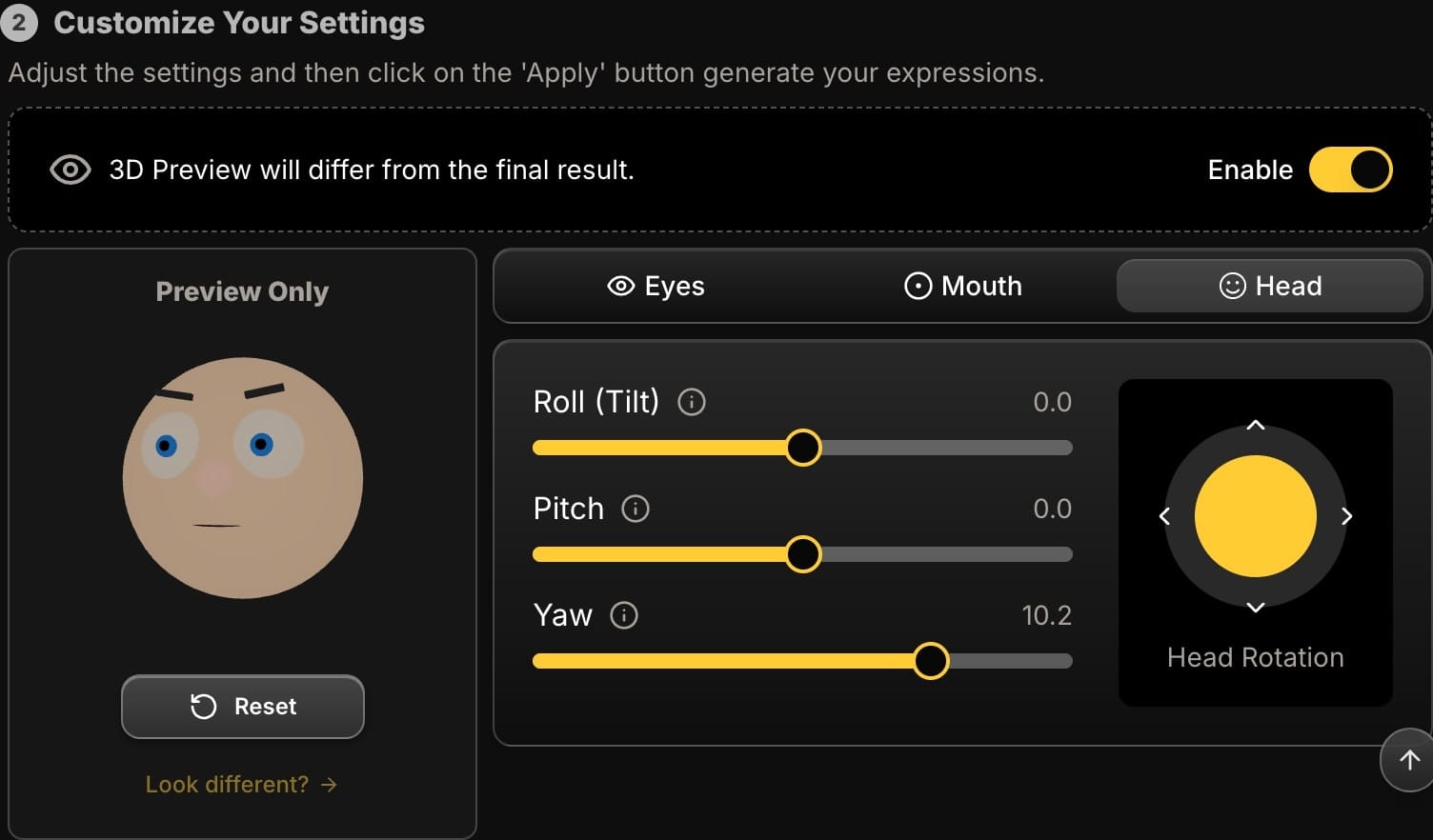
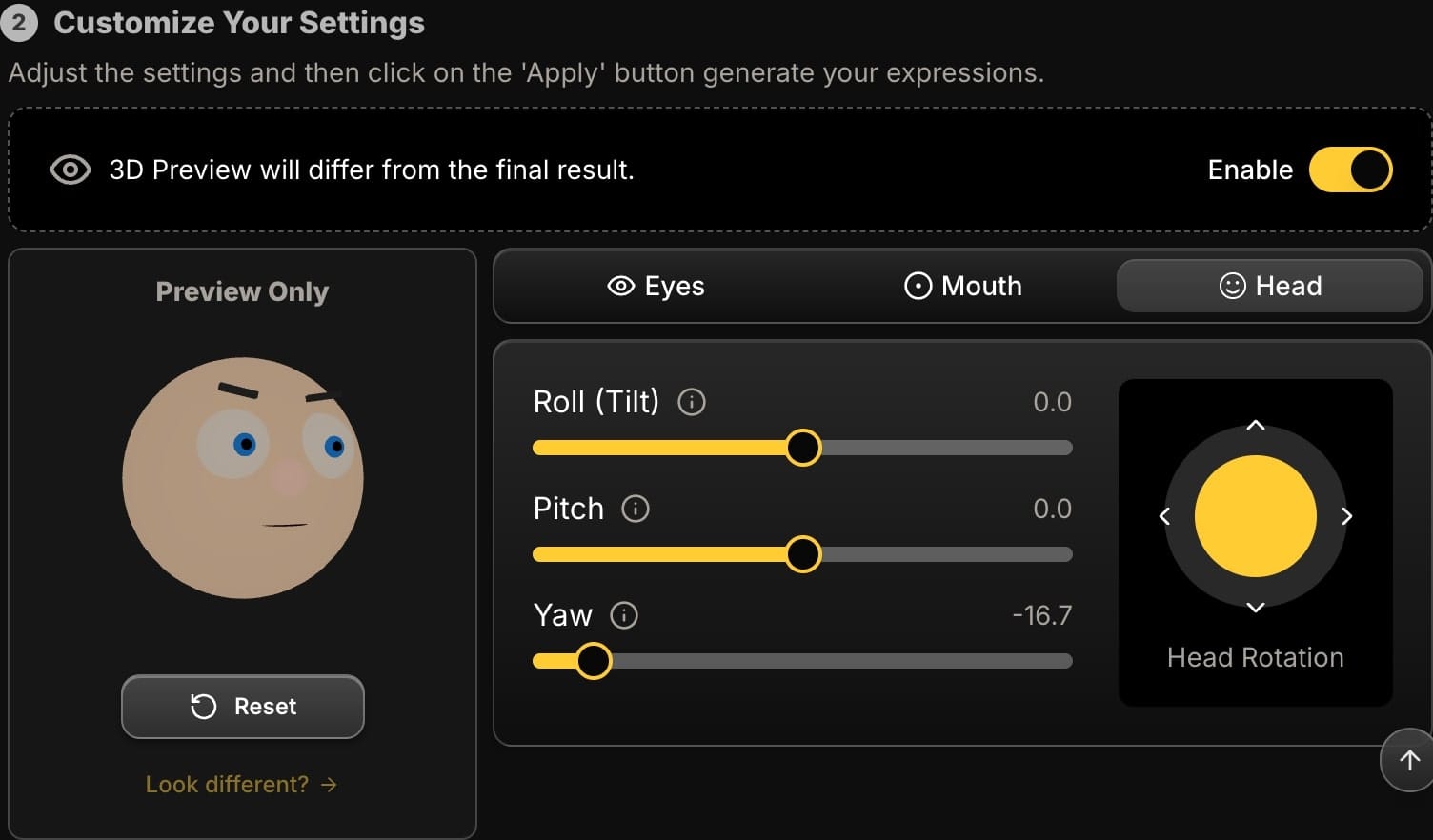
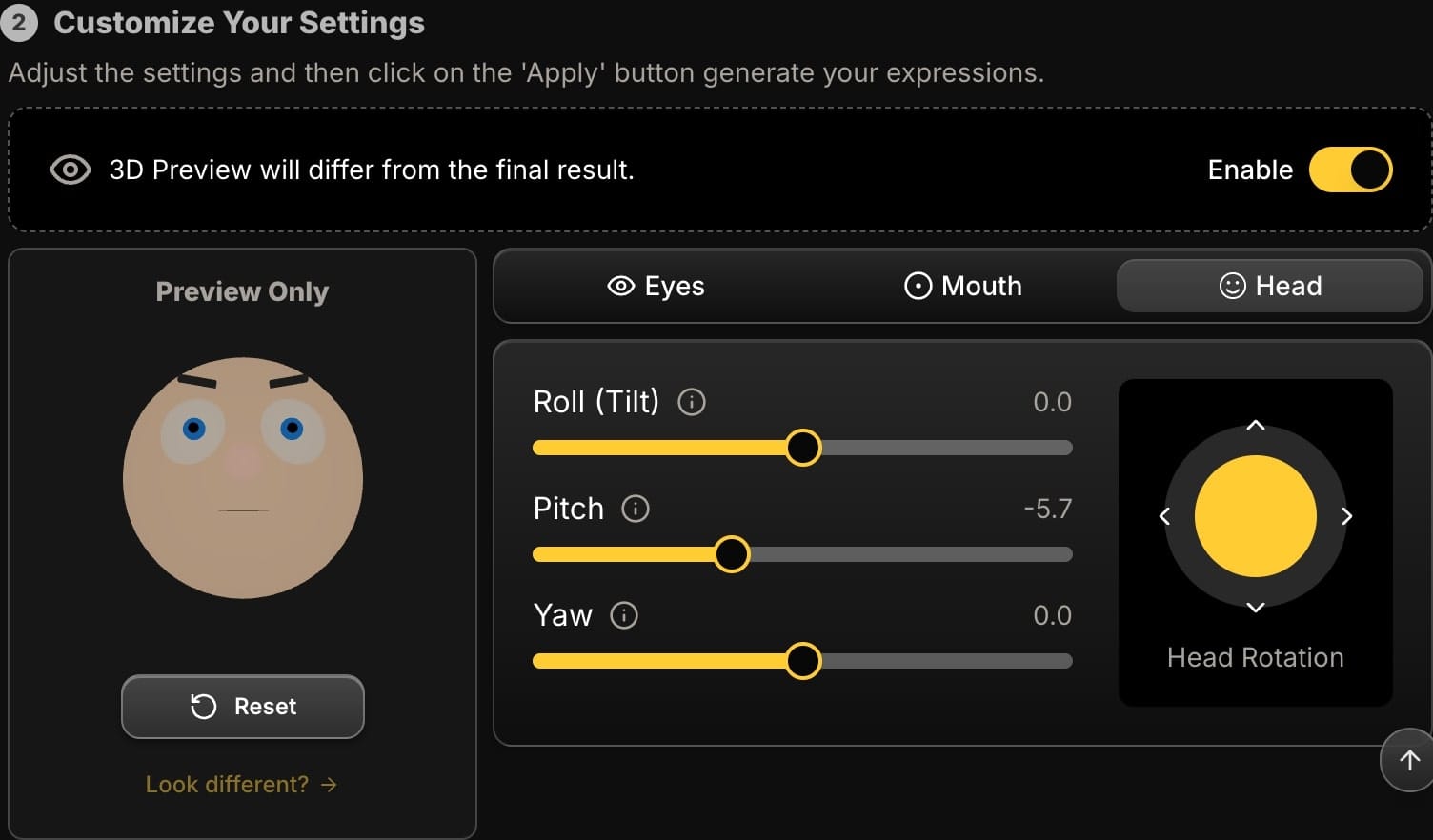
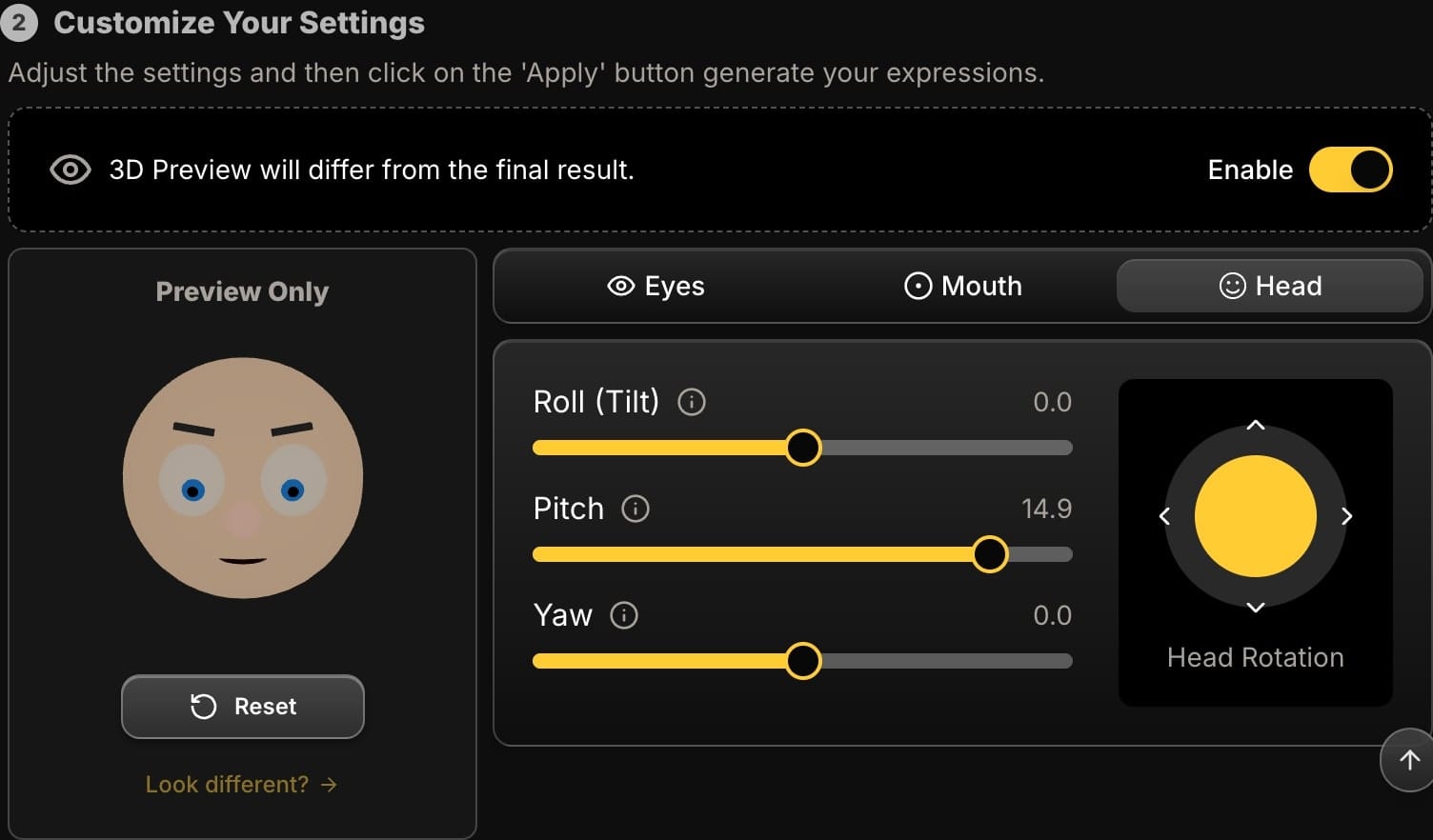
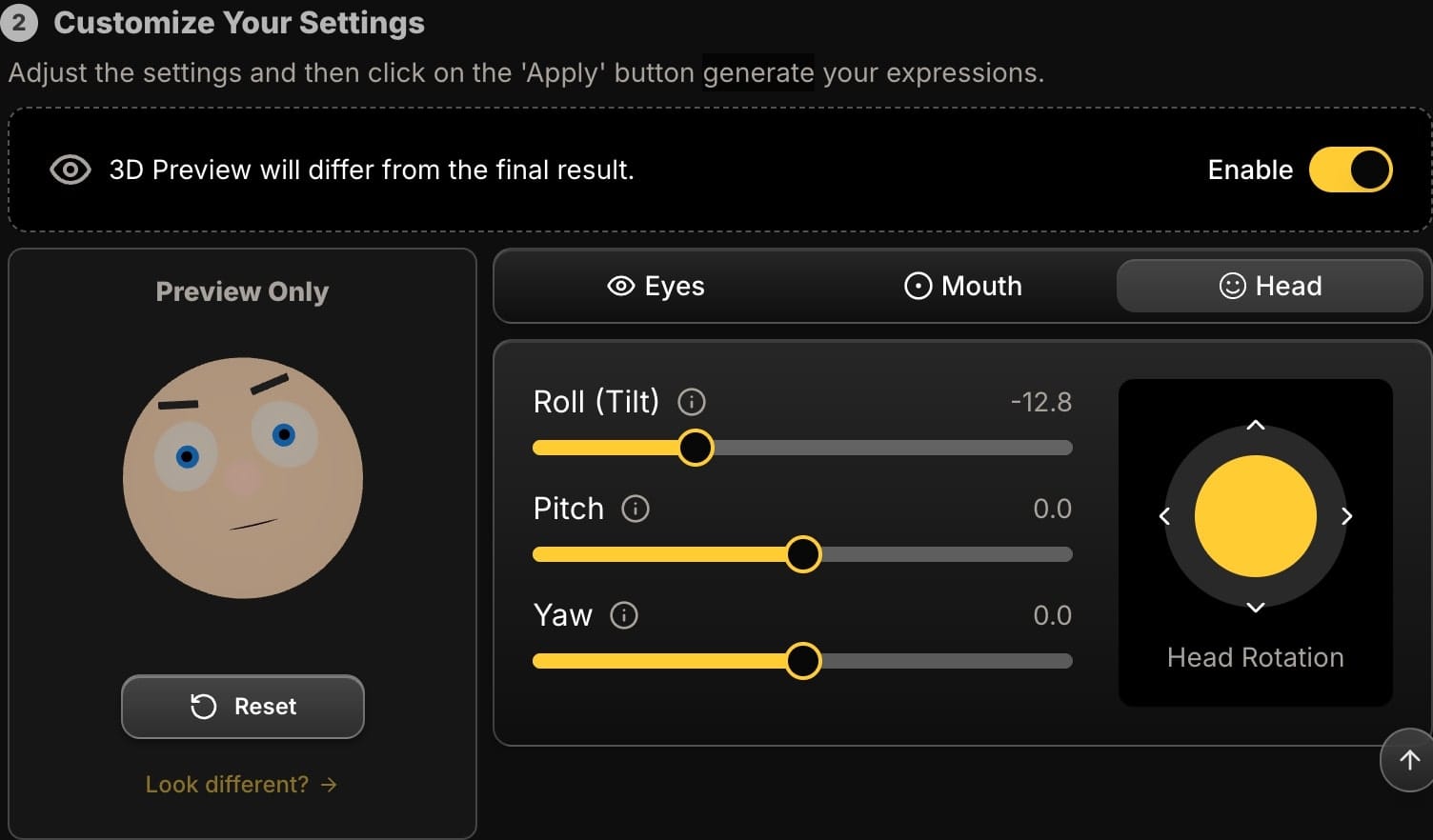
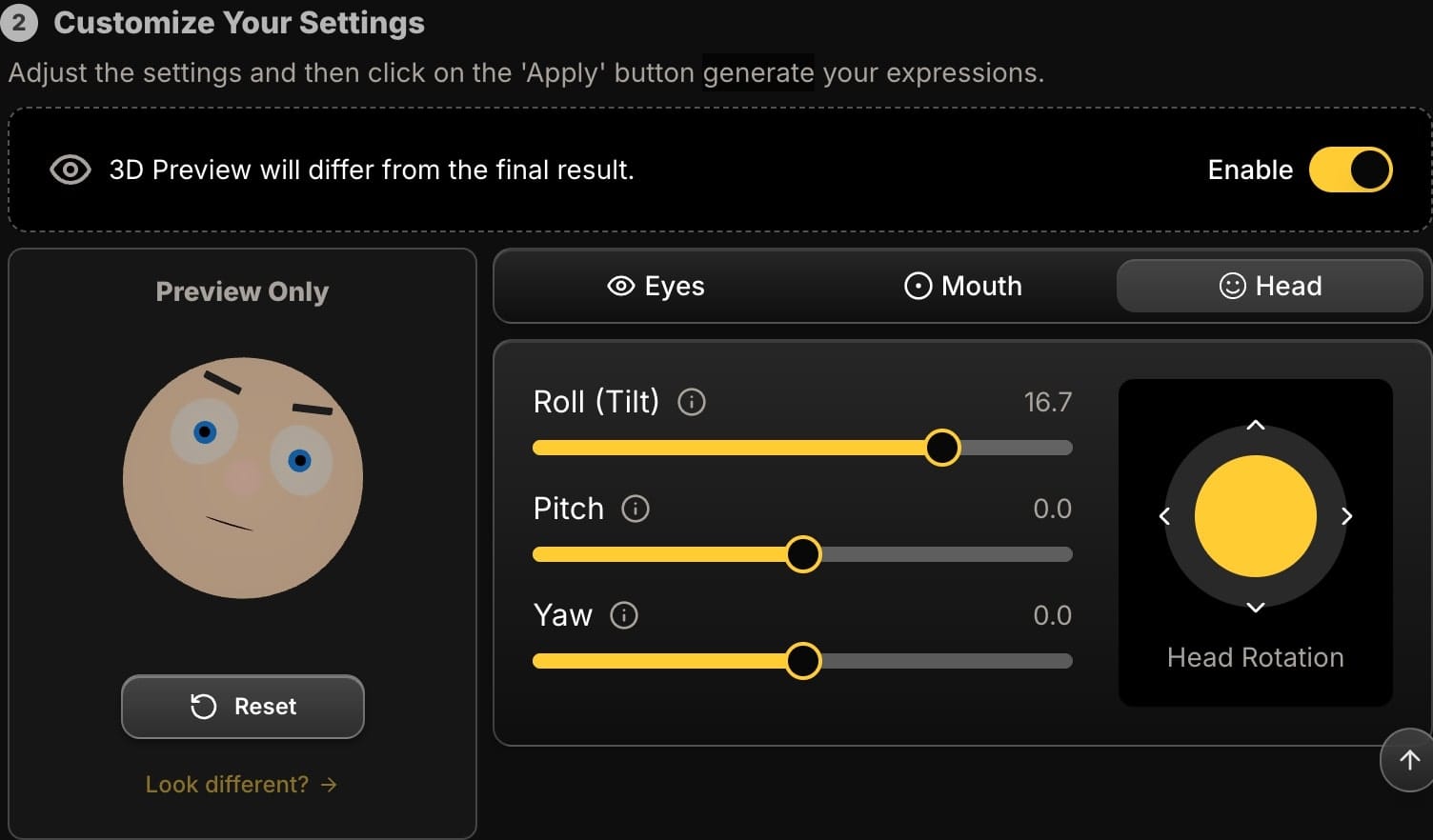
Mastering the Joystick: For Fluid Motion
While sliders offer precision, the joystick offers fluidity. It combines two controls into one, making it perfect for finding the perfect angle quickly.
- Eye Movement: In the "Eyes" tab, the joystick controls the X and Y position of the pupils simultaneously. Simply move the stick in the direction you want the subject to look. It's the most intuitive way to aim their gaze.
- Head Rotation: In the "Head" tab, the joystick controls Pitch and Yaw. This lets you "steer" the head into the perfect position, as if you were directing a virtual photoshoot in real-time.
The Feedback Loop: The 3D Preview
None of this would be as effective without the real-time 3D preview. As you move a slider or the joystick, a simple avatar on the screen instantly mirrors your adjustments. This live feedback loop is what makes the process feel so interactive. It helps you guide the AI and understand the effect of your changes before you apply them to your final image, removing all the guesswork.
Conclusion: Editing by Feel, Not by Numbers
By shifting the editing process from numerical inputs to direct, tactile controls, modern AI tools make sophisticated facial adjustments accessible to everyone. You no longer need to be a VFX artist to fix a bad camera angle or craft the perfect smile. You just need to push, pull, and guide the expression until it feels right.
Ready to experience a more intuitive way to edit? Sign Up Today and see what you can create.



